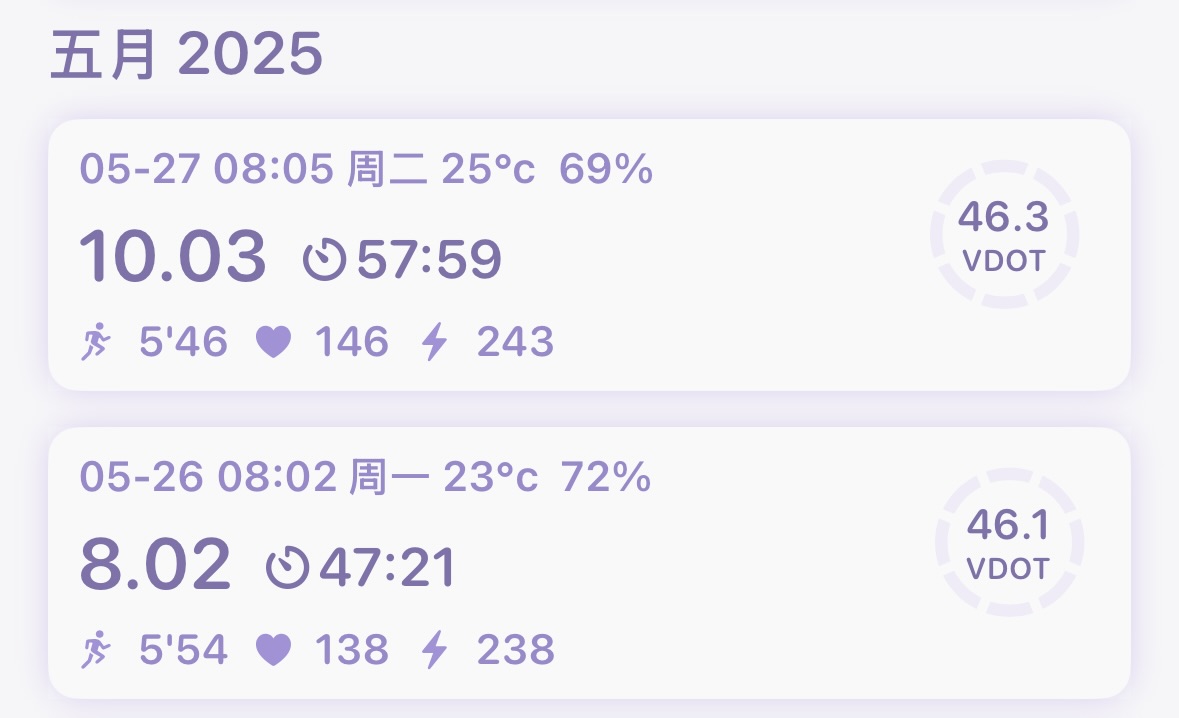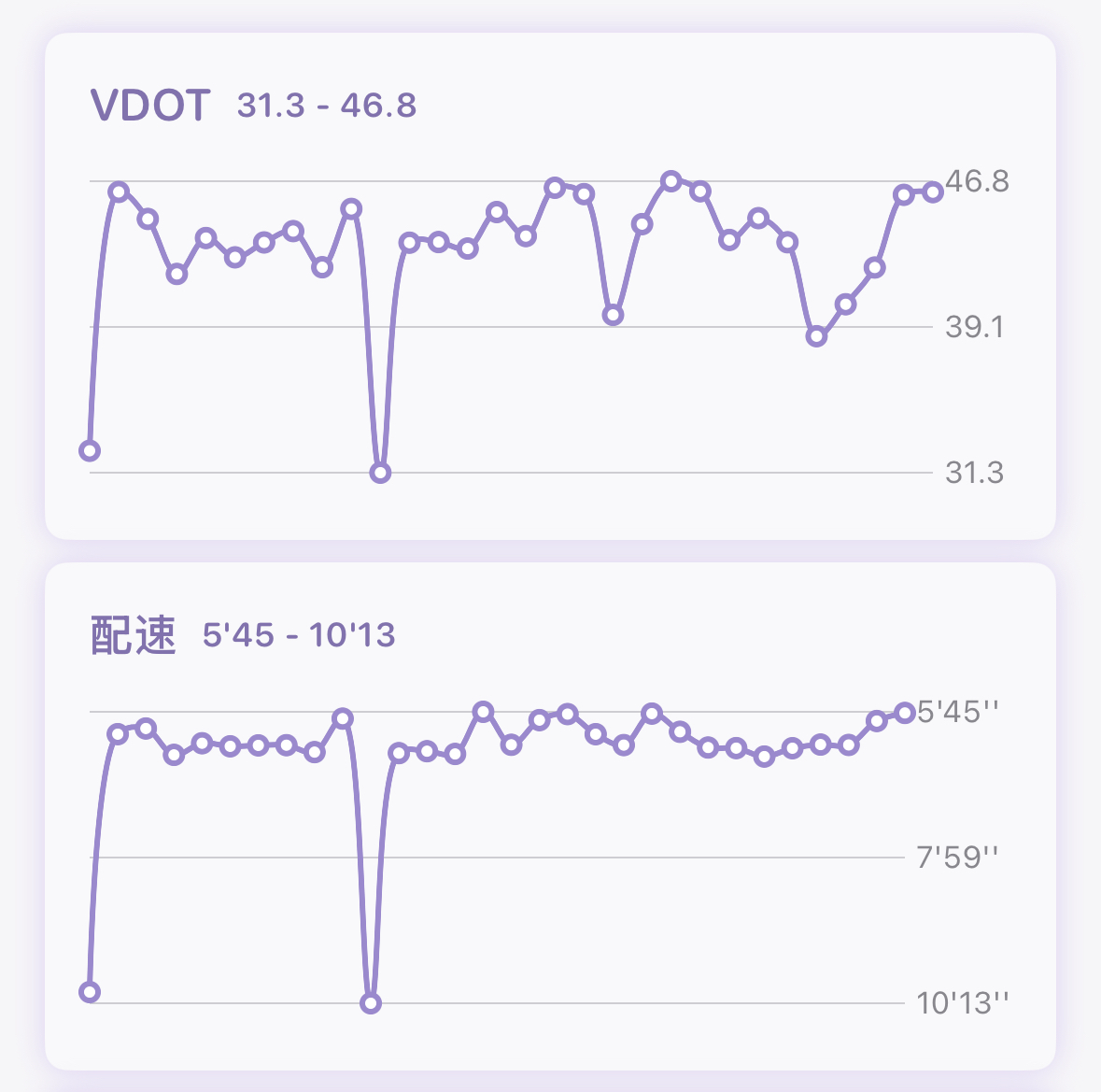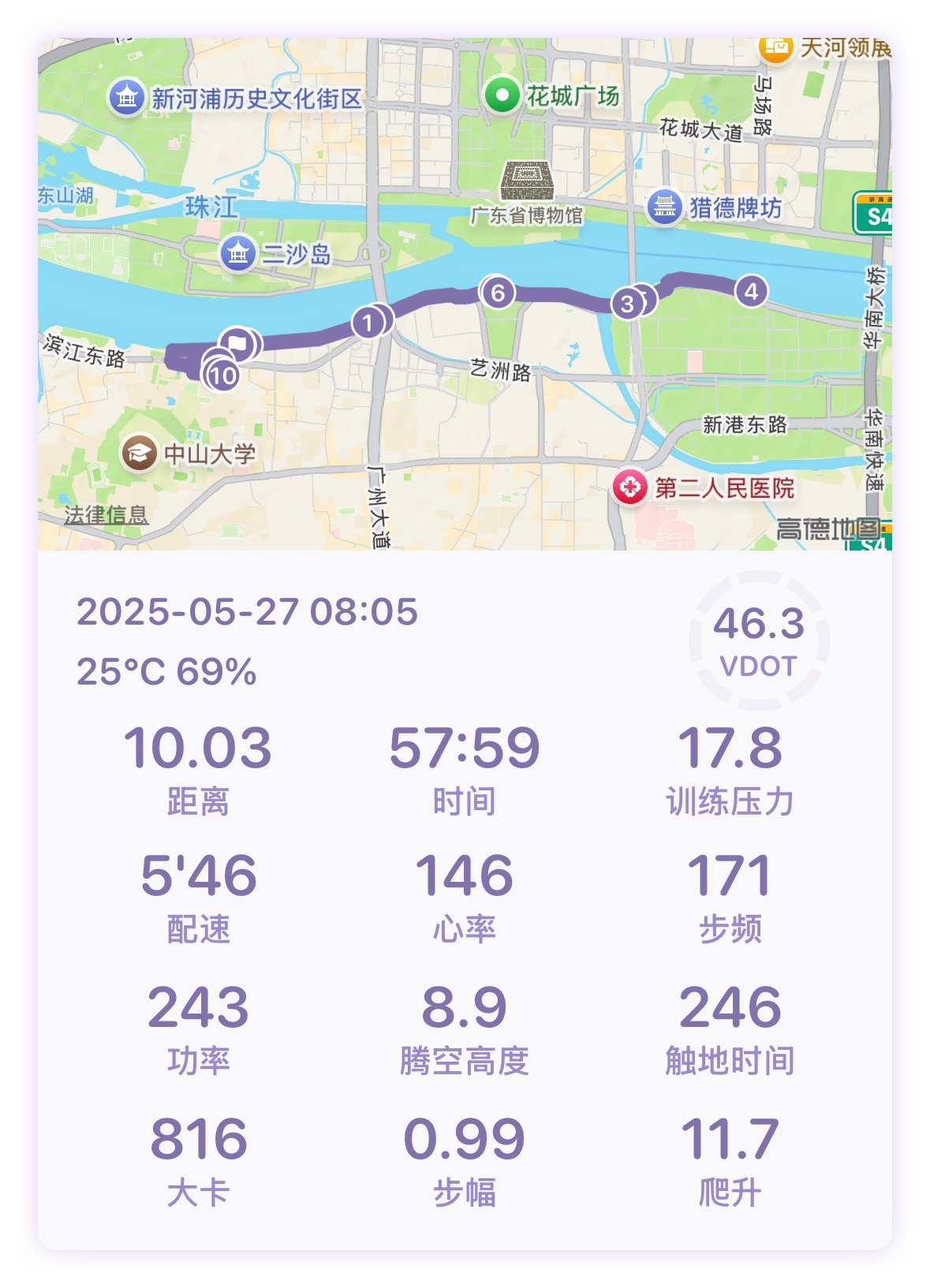vdot
Runners all want to understand their running level and use it to develop scientific training plans.
VDOT (sometimes called "running power value") is such an indicator that combines running performance with maximum oxygen uptake (VO₂max) to provide runners with a unified measurement standard. VDOT was proposed by American exercise physiologist Dr. Jack Daniels, and its full name is V̇O₂max Distance Optimized Training. Sometimes it can also be understood as "speed at VO₂max". Simply put, VDOT is a quantified value of the maximum ability of the body to absorb and utilize oxygen during running. This indicator is essentially an "adjusted VO₂max" that directly uses running performance to estimate a runner's aerobic capacity. For example, if you complete a 5K test at 5 minutes per kilometer pace, a VDOT calculator would show your VDOT is approximately 50.
The higher the VDOT value, the better the runner's maximum oxygen uptake and running efficiency, and usually the faster the race performance. In short, VDOT provides runners with a unified and easy-to-understand strength assessment method.
However, the performance mentioned in VDOT calculations refers to race performance, which means it assumes this result is close to the runner's full effort. If it's just an easy run, using its performance for direct calculation would yield an artificially low VDOT. So in PaceGuru, we attempt to calculate the runner's effort level for that run and use it to make appropriate corrections to VDOT.
Similar to how we calculate "training stress," I decided to primarily use heart rate as the main correction factor. The simple idea is: if a runner completes 5K in 30 minutes but maintains heart rate below zone 2, they might be able to race 5K in 23 minutes at full effort. Then we use the VDOT value corresponding to 23 minutes as the VDOT for this run.
After incorporating heart rate influence, my VDOT values became much more stable across different training intensities.

However, this version still doesn't account for weather. Weather's impact on running mainly involves temperature and humidity. My personal experience with RQ was that my running power would gradually decline entering summer, then gradually increase entering fall and winter.
PaceGuru also attempts to include corrections for temperature and humidity, appropriately recognizing runners' efforts in hot weather. A 6:00 pace in summer might represent the same VDOT as a 5:00 pace in fall. When weather is poor, appropriately slowing down for safety won't affect training effectiveness or running ability, nor will it affect the data.

Of course, as a PaceGuru tradition, for any indicator data, we provide a change curve.

